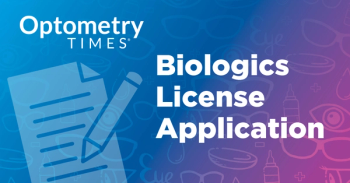
Prevent Blindness launches ROP Education and Support Program
The program, announced prior to ROP Awareness Week, has established an ROP-specific website with free resources for parents and eye care professionals.
Nonprofit Prevent Blindness has launched a new Retinopathy of Prematurity (ROP) Education and Support Program in part of its ROP Awareness Week, recognized from February 26 to March 3. According to a news release, this is the first ROP awareness week declared by the organization, with the program offering free educational resources for both parents and eye care professionals.
“Diagnosing and treating ROP early is essential for preventing or lessening ROP-associated vision loss,” said Prevent Blindness President and CEO Jeff Todd in the release. “The ultimate goal for our new ROP program is to educate and offer much-needed resources for families of children with ROP and support the healthcare professionals who care for premature children to help prevent unnecessary vision impairment.”
Prevent Blindness developed a specific
Other resources available through ROP Awareness Week include
ROP prevalence and developments
Over the past decade, pre- and early-term birth rates have dramatically risen, which makes infants more predisposed to developing ROP. From 2014 to 2022, preterm birth rate, or delivery before 37 weeks of pregnancy, rose 12%, with early-term, or 37 to 38 weeks of pregnancy, rising 20%.2
A study from 2023 reviewed recent trends of ROP, citing the disease as the leading preventable cause of blindness and visual impairment in infants and young children. The researchers, led by first author Laura Bujoreanu Bezman, stated that screening and monitoring oxygen intake play a vital role in detection and treatment. They also attributed the increased prevalence of ROP to the improved survival rate of micro-premature babies, who are more likely to develop the condition.3
“Apart from [birth weight,] [gestational age,] and oxygen therapy, certain biological parameters can indicate the risk of ROP occurrence. IGF-1 plays an important part in the development of this pathology, and several studies have been sustaining lately that the intravenous therapy with Recombinant Human Insulan-Like Growth Factor (rhIGF-1) together with its binding protein -3 (rhIGFBP-3) is a promsing solution to normalize the plasmatic value of IGF-1 from the first phase of ROP. Starting from the idea that the kidneys and the retina have a similar embryological development, there have been recent reports to indicate a new potential risk factor, ie proteinuria” the authors said.
Risk factors to the progression of ROP can also be caused by central nervous system injuries, including intraventricular hemorrhage and periventricular leikomalacia.3
References:
- Prevent Blindness launches new “Retinopathy of Prematurity (ROP) Education and Support Program” as part of inaugural ROP Awareness Week, Feb. 26 – March 3, 2024. Prevent Blindness. News Release. Published February 21, 2024. Accessed February 22, 2024. https://preventblindness.org/rop-awareness-week-2024/
- Martin JA, Osterman MJK. Shifts in the Distribution of Births by Gestational Age: United States, 2014-2022. Nat Vit Stat Reports. 2024;73:1-11.
- Bezman LB, Tiutiuca C, Totolici G, et al. Latest Trends in Retinopathy of Prematurity: Research on Risk Factors, Diagnostic Methods and Therapies. Int J Gen Med. 2023;16:937–949. doi: 10.2147/IJGM.S401122
Newsletter
Want more insights like this? Subscribe to Optometry Times and get clinical pearls and practice tips delivered straight to your inbox.










































